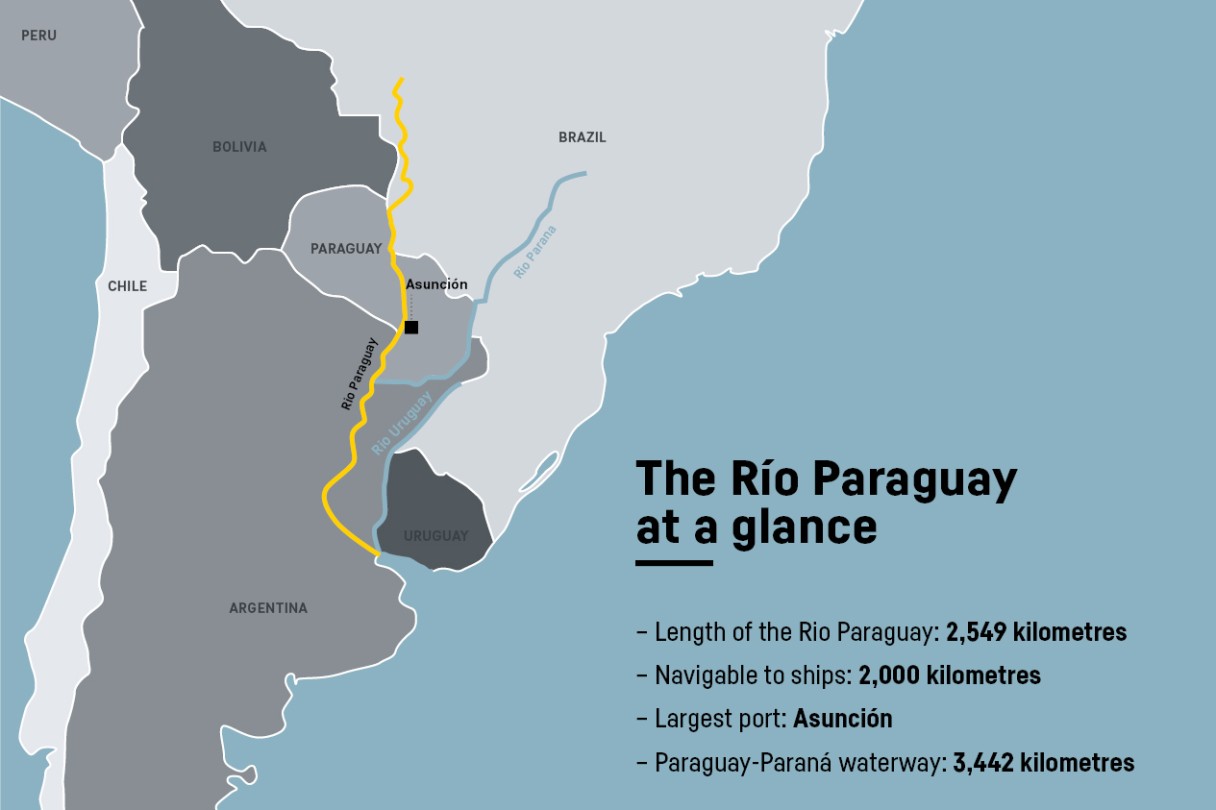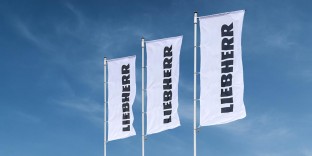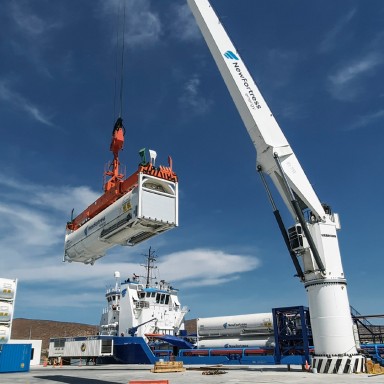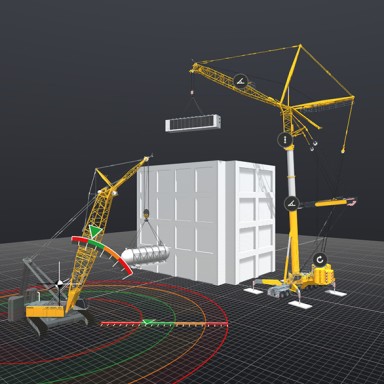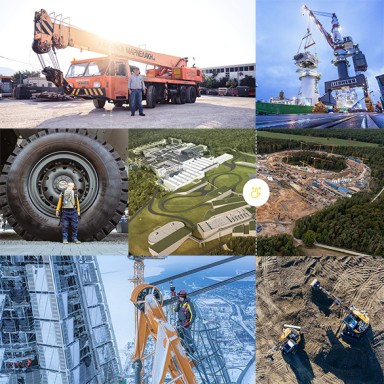 Group
Group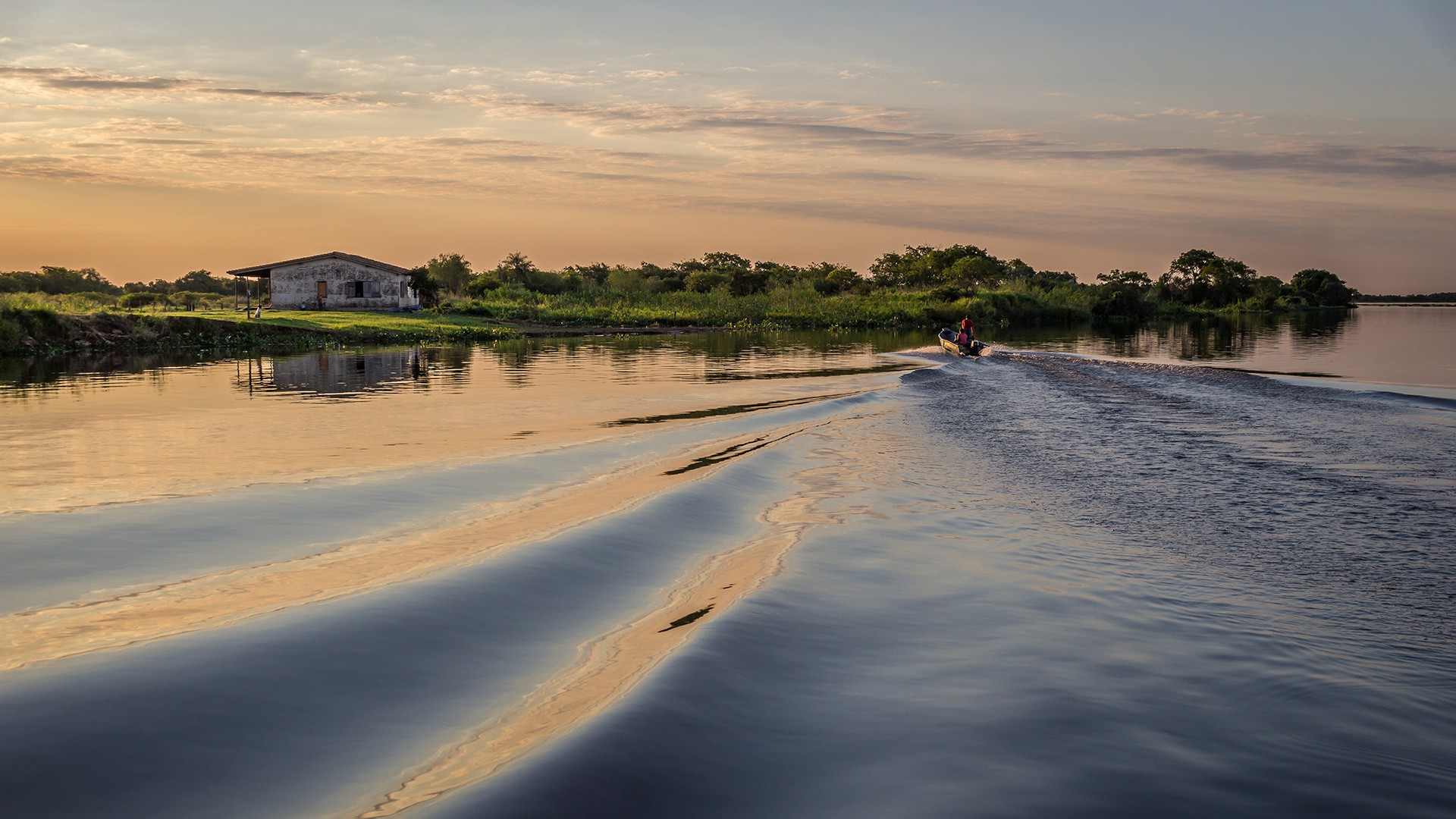
6 minutes reading time
From the river out into the world
River that gives birth to the sea: That's what the name "Paraguay" means in Guaraní, the language of the indigenous people. However, this country in the heart of South America has no direct access to the sea. This makes the Río Paraguay, the longest and largest river in the country, all the more important. It is one of the region's main trading routes. But how exactly does it manage to connect this land-locked country to the rest of the world? And what role do Liebherr's maritime cranes play in all this?
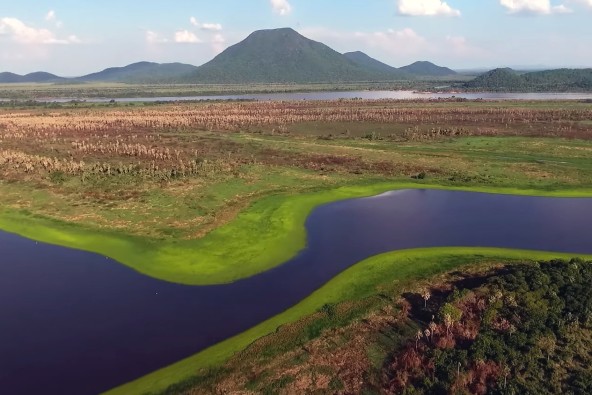
Fruits, furniture – and people
Like a snake, the Río Paraguay winds over 2,500 kilometers through the tropical and subtropical landscape: its source lies in the mountainous Pantanal in Brazil. After crossing one of the largest inland wetlands in the world, it flows through Paraguay in a north-south direction until it finally flows into the Atlantic Ocean in Argentina. But the river is also of great importance to the small Paraguayan villages, where summer temperatures can soar as high as 45 degrees Celsius. Here, the water isn't just a place where people long to be. It is crucial for obtaining supplies. So there is a bustle of activity on the banks and on the river, where small craft ply their way among the speedboats. In many places along the river banks, people are waiting for the market boat, which transports bananas and potatoes, furniture and motorbikes. The boat also carries passengers, who often spend days on board in order to go to town to do banking or sort out official business. When the journey through the country becomes too arduous and too long, locals and travellers alike sling hammocks between the crates and sacks or sleep on the floor. During the day, they wait for the boat to moor at the next jetty. Though it may not seem very comfortable, the boat is the best means of transport. This is because many of the roads are in poor condition and travel by water is often the fastest and easiest option.

By clicking on “ACCEPT”, you consent to the data transmission to Google for this video pursuant to Art. 6 para. 1 point a GDPR. If you do not want to consent to each YouTube video individually in the future and want to be able to load them without this blocker, you can also select “Always accept YouTube videos” and thus also consent to the respectively associated data transmissions to Google for all other YouTube videos that you will access on our website in the future.
You can withdraw given consents at any time with effect for the future and thus prevent the further transmission of your data by deselecting the respective service under “Miscellaneous services (optional)” in the settings (later also accessible via the “Privacy Settings” in the footer of our website).
For further information, please refer to our Data Protection Declaration and the Google Privacy Policy.*Google Ireland Limited, Gordon House, Barrow Street, Dublin 4, Ireland; parent company: Google LLC, 1600 Amphitheatre Parkway, Mountain View, CA 94043, USA** Note: The data transfer to the USA associated with the data transmission to Google takes place on the basis of the European Commission’s adequacy decision of 10 July 2023 (EU-U.S. Data Privacy Framework).Big exporter
Paraguay is one of the world's largest exporters of soya beans, corn, meat products and organic sugar. The country is also one of the world's largest energy exporters. Most of these outbound goods are transported via the waterway north to Brazil or south to the ports of Montevideo and Buenos Aires and on to the importing countries all over the world.
Containers every day of the year
The river is also extremely important for modern-day Paraguay. Because the waterway provides an essential link to international trade and thus to the rest of the world. The Río Paraguay and the Río Paraná, which also has its source in Brazil, together form one of the most extensive waterways in the world. Almost all freight is transported by ship.
In order to ensure that everything runs smoothly, the transfer of goods between water and land has to be as efficient as possible. Everything from food to consumer goods to important raw materials for the region's industry is handled. This calls for cutting-edge port technology, particularly with regard to container transport. One person who knows more about this than anyone is Ricardo dos Santos. He is the port operator of the Terports San Antonio and Villeta, the most modern container terminals on the Río Paraguay. The location of Terport Villeta makes the terminal the first port of call for all imports and exports in the region surrounding the capital, Asunción. "That is why the port is open 365 days a year," says dos Santos. "Even when water levels are low, the port can still operate," explains the experienced terminal operator proudly.
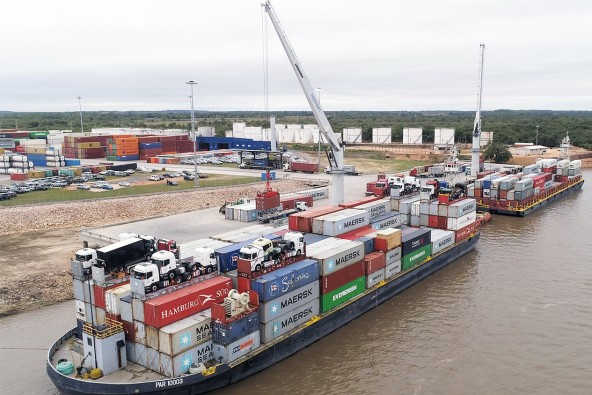
Key staging post
Each year, over 50 per cent of all Paraguayan container transport passes through Terport Villeta. In order to manage this volume of transshipment between river and land, between terminal and ship, dos Santos relies on state-of-the-art equipment at the terminal: Liebherr maritime cranes – or to be more precise, two cranes type FCC 280. Thanks to their compact design, they make optimal use of the limited space. Moreover, thanks to their 38-metre jib working radius, ships up to Panamax width or eight rows of containers can be loaded and unloaded efficiently.
Last but not least, the cranes are very fast – each of them can handle up to 25 containers an hour. For the Terport terminal in Villeta, this means the transshipment of up to 50 containers an hour.
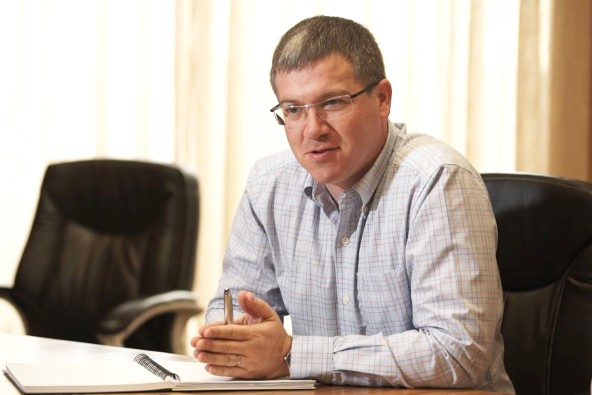
Ricardo D. dos Santos, Executive Director of Terport
This is a success story for which the final chapter hasn't yet been written. For example, Ricardo dos Santos is planning to purchase two more Liebherr cranes in the next few years. "In recent years, many production facilities have sprung up here in Paraguay. Primarily to serve the Brazilian market. Raw materials from Asia come upstream on the Paraná River and are further processed in Paraguay, and the end product, from car components to clothes, is exported to Brazil," says Santos, who was quick to recognise the importance and the potential of the port for the whole of Paraguay.
For Paraguay is a country in growth mode. A country that understands how to make use of the resources available locally: using the waters of the Río Paraguay as a pathway to the world.
